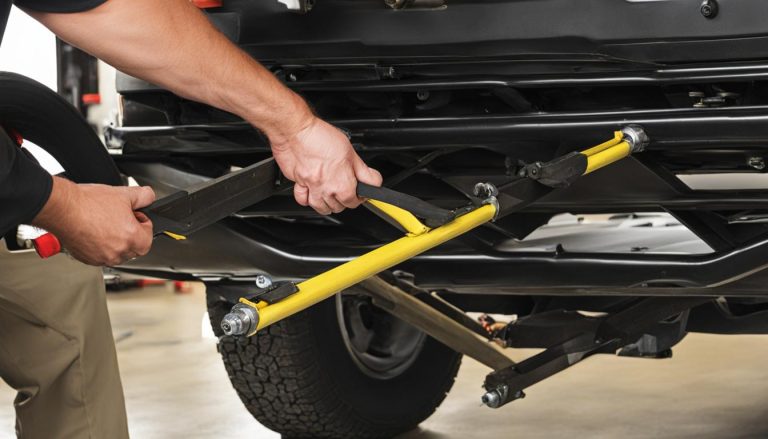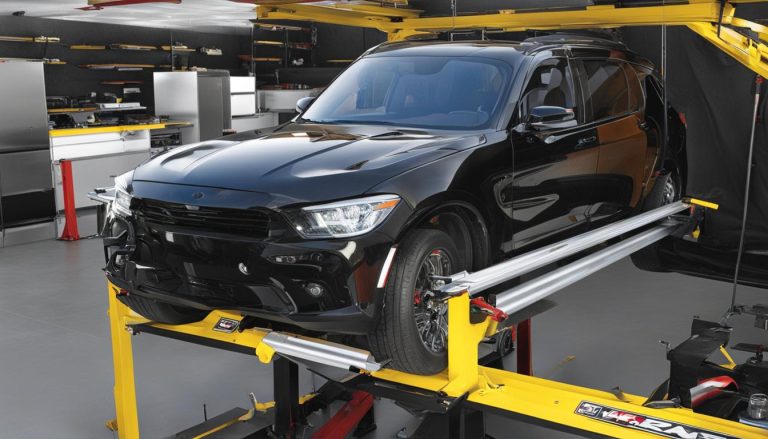How to Adjust Traction Bars for Improved Performance
Traction bars play a crucial role in improving traction, stability, and handling, making them essential for any performance-driven driver. Learning how to adjust traction bars and enhance your vehicle’s performance will allow you can optimize your vehicle’s grip on the road, especially during acceleration and cornering.
Key Takeaways:
- Adjusting traction bars improves vehicle traction, stability, and handling.
- Traction bars prevent wheel hop and minimize axle wrap, ensuring optimal performance.
- Fine-tuning traction bars enhances grip during acceleration and cornering.
- Regularly assess and adjust traction bars for optimal performance.
- Use the right tools and follow proper techniques when adjusting traction bars.
Why Adjusting Traction Bars Is Important
Adjusting traction bars is crucial for improving your vehicle’s traction, stability, and handling. By fine-tuning these bars, you can enhance your vehicle’s grip on the road, especially during acceleration and cornering. Let’s explore the importance and benefits of adjusting traction bars.
The Importance of Adjusting Traction Bars
Adjusting traction bars is vital for several reasons:
- Preventing Wheel Hop: Wheel hop occurs when one or more wheels lose traction, causing them to bounce or hop off the ground. This can lead to poor vehicle control and decreased acceleration. Properly adjusted traction bars help prevent wheel hop, ensuring consistent traction and stability.
- Minimizing Axle Wrap: Axle wrap happens when the power transmitted from the engine to the wheels causes the axle to twist or wrap. This can result in uneven weight distribution, reduced traction, and potential damage to drivetrain components. Adjusting traction bars helps minimize axle wrap, allowing for smoother power transfer.
- Improving Weight Transfer: The weight transfer during acceleration, braking, and cornering significantly affects a vehicle’s traction and handling. Properly adjusted traction bars optimize weight transfer, keeping the tires firmly planted on the surface and enhancing grip.
The Benefits of Adjusting Traction Bars
Adjusting traction bars offers numerous benefits:
“Properly adjusted traction bars enhance your vehicle’s traction and stability, ensuring optimal performance and safety. They improve weight transfer, prevent wheel hop, and minimize axle wrap.”
- Better Traction: Adjusting traction bars helps your vehicle maintain traction, especially on uneven or slippery surfaces. This is crucial for off-roading, drag racing, or even daily driving, as it increases control and confidence behind the wheel.
- Enhanced Stability: Proper traction bar adjustment improves stability by reducing excessive body roll and keeping all four wheels firmly planted on the ground. This increases handling predictability and allows for more precise steering inputs.
- Maximized Power Output: By minimizing wheel hop and axle wrap, correctly adjusted traction bars ensure that the power generated by the engine is efficiently transferred to the wheels. This maximizes power output and overall performance, resulting in quicker acceleration and improved speed.
- Reduced Wear and Tear: Adjusting traction bars can significantly reduce wear and tear on suspension components, drivetrain, and tires. By optimizing weight transfer and minimizing excessive forces on these parts, you can extend their lifespan and reduce the need for costly repairs.
Adjusting traction bars provides several performance and safety benefits for your vehicle. It improves traction, stability, and power output while minimizing wheel hop and axle wrap. These adjustments play a significant role in maximizing performance and ensuring a safe and enjoyable driving experience.
Understanding Traction Bars
Traction bars are essential components of a vehicle’s suspension system that play a vital role in improving stability and traction. These bars effectively counteract torque and flex during acceleration, enhancing the vehicle’s grip on the road and reducing wheel hop. Understanding the different types of traction bars and their purpose is crucial for maximizing your vehicle’s performance.
Types of Traction Bars
There are several types of traction bars commonly used in vehicles:
- Ladder Bars: Ladder bars are a popular choice for drag racing applications. They consist of two bars that connect the axle housing to the frame or chassis in a ladder-like configuration. This design helps to prevent axle wrap and improve traction.
- Leaf Spring Traction Bars: Leaf spring traction bars are commonly used in vehicles with leaf spring suspensions. These bars connect the axle housing to the frame, effectively limiting axle wrap and improving traction.
- Four-Link Suspension Systems: Four-link suspension systems use four bars to locate the axle housing. This setup allows for precise control over axle movement, minimizing wheel hop and maximizing traction.
Purpose of Traction Bars
The main purpose of traction bars is to enhance stability and traction in a vehicle. By countering torque and flex, traction bars minimize wheel hop during acceleration, preventing the loss of traction and maintaining control. Additionally, traction bars help distribute weight evenly, improving weight transfer and optimizing the vehicle’s overall performance.
| Traction Bars | Purpose |
|---|---|
| Ladder Bars | Prevent axle wrap and improve traction |
| Leaf Spring Traction Bars | Limit axle wrap and improve traction in vehicles with leaf spring suspensions |
| Four-Link Suspension Systems | Maximize traction and minimize wheel hop through precise axle control |
Adjusting and maintaining the proper alignment of traction bars is crucial for their effective operation. By understanding the different types of traction bars and their purpose, you can make informed decisions about improving your vehicle’s stability, traction, and overall performance.
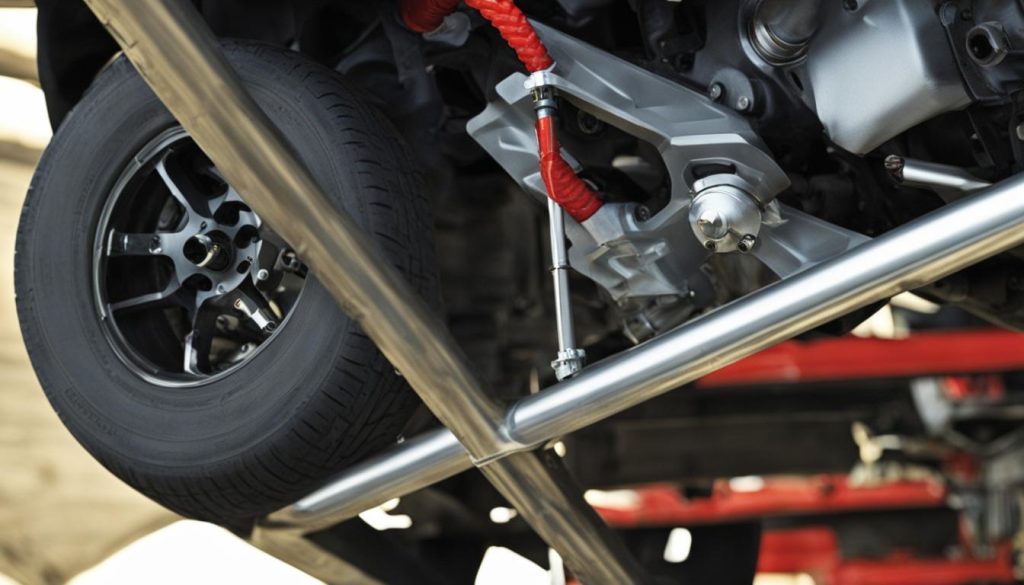
Steps To Adjust Traction Bars
Adjusting traction bars is a step-by-step process that requires careful evaluation and fine-tuning. By following these essential steps, you can ensure optimal performance and improved traction for your vehicle.
- Locate the adjustment bolts on the bars: Begin by identifying the adjustment bolts on your traction bars. These bolts are typically situated near the connection points of the bars to the chassis.
- Evaluate the current position and alignment: Take a close look at the current position and alignment of the traction bars. Assess whether they need to be adjusted for better performance or if they are misaligned.
- Determine the desired adjustment: Consider your specific needs and goals when determining the desired adjustment. Whether you’re looking to reduce wheel hop, improve stability, or enhance weight transfer, understanding your objectives will guide the adjustment process.
- Tighten or loosen the bolts: With the desired adjustment in mind, proceed to tighten or loosen the adjustment bolts accordingly. Turn the bolts clockwise to tighten and counterclockwise to loosen. Be cautious not to overtighten or overtighten, as it can affect the overall performance and safety of your vehicle.
It is crucial to ensure correct alignment and regularly assess and adjust your traction bars for optimal performance. Remember to refer to your vehicle’s manual or consult with a professional for specific guidelines based on your vehicle’s make and model.
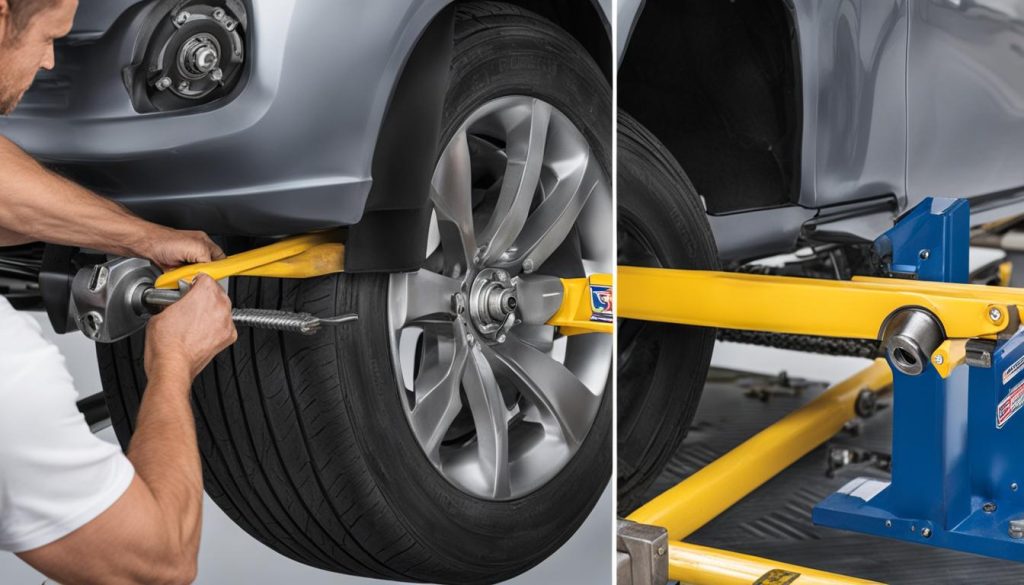
Tools Needed For Adjusting Traction Bars
Adjusting traction bars requires specific tools to ensure a smooth and safe process. Here are the necessary tools you’ll need:
- Wrenches: A set of wrenches in various sizes will be handy for loosening and tightening bolts during the adjustment process.
- Sockets: Sockets are essential for removing and installing nuts and bolts efficiently.
- Torque Wrench: A torque wrench is used to apply the correct level of torque to ensure the proper tightening of bolts in accordance with the manufacturer’s specifications.
- Pry Bar: A pry bar can be helpful for adjusting or positioning the traction bars as needed.
- Jack: A jack is necessary to lift the vehicle safely, providing access to the traction bars for adjustment.
It is important to use high-quality tools to ensure accuracy and durability during the adjustment process. Remember to take safety precautions such as wearing protective gloves and goggles to prevent any potential injuries.
Using the right tools will help you properly adjust your traction bars, improving your vehicle’s traction and stability on the road.
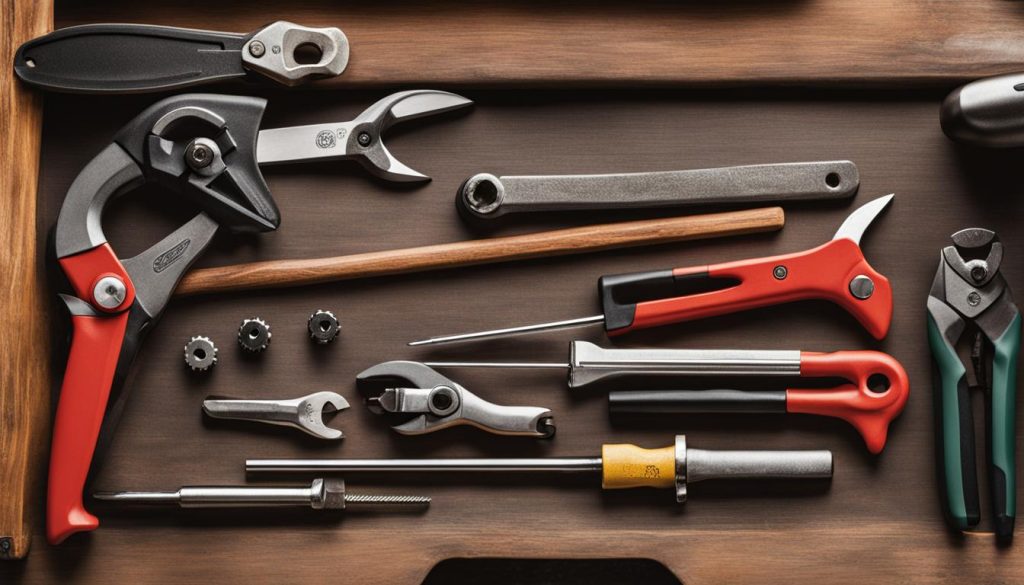
| Traction Bar Type | Advantages | Disadvantages |
|---|---|---|
| Ladder Bars | Excellent axle control | Can increase suspension stiffness |
| Leaf Spring Traction Bars | Improves traction and eliminates wheel hop | May limit suspension travel |
| Four-Link Suspension Systems | Offers precise adjustability | More complex to install and adjust |
Best Practices For Adjusting Traction Bars
When it comes to adjusting traction bars, following the manufacturer’s instructions is crucial for optimal results. Additionally, if you’re unsure or need assistance, don’t hesitate to seek professional help. Their expertise can ensure that you make the necessary adjustments correctly and safely.
Regular inspection and maintenance of your traction bars are essential to keep them performing at their best. By routinely checking for any signs of improper adjustment, such as vehicle instability or uneven tire wear, you can address any issues promptly. Rectifying these problems will help maintain the stability and safety of your vehicle.
Adjusting your traction bars using the proper technique is key to enhancing your vehicle’s handling and stability. By fine-tuning the bars according to your specific needs, you can optimize traction and minimize wheel hop. Remember to prioritize your safety throughout the process and use the recommended tools to ensure accurate adjustment.
To achieve the best results when adjusting your traction bars, it’s advisable to consult experts when needed. Their knowledge and experience can provide valuable insights and guidance. By combining their expertise with your efforts, you’ll enhance your overall driving experience by improving your vehicle’s performance and stability.
FAQ
Why is adjusting traction bars important?
Adjusting traction bars is important because it improves vehicle traction, stability, and handling. It prevents wheel hop, minimizes axle wrap, and enhances weight transfer, resulting in better overall performance and safety.
What are traction bars and what is their purpose?
Traction bars are essential components of a vehicle’s suspension system that improve stability and traction. They counteract torque and flex during acceleration, enhancing the vehicle’s grip on the road and reducing wheel hop.
How do I adjust traction bars?
To adjust traction bars, follow these steps: 1) Locate the adjustment bolts on the bars. 2) Evaluate the current position and alignment of the bars. 3) Determine the desired adjustment based on your specific needs. 4) Tighten or loosen the bolts to achieve the desired adjustment.
What tools do I need to adjust traction bars?
The tools required for adjusting traction bars include wrenches, sockets, a torque wrench, a pry bar, and a jack. It is important to use high-quality tools and take safety precautions such as wearing protective gloves and goggles.
What are the best practices for adjusting traction bars?
When adjusting traction bars, it is important to follow the manufacturer’s instructions and seek professional assistance if necessary. Regular inspection and maintenance of traction bars are vital to ensure their optimal performance. Signs of improper adjustment include vehicle instability and uneven tire wear.

